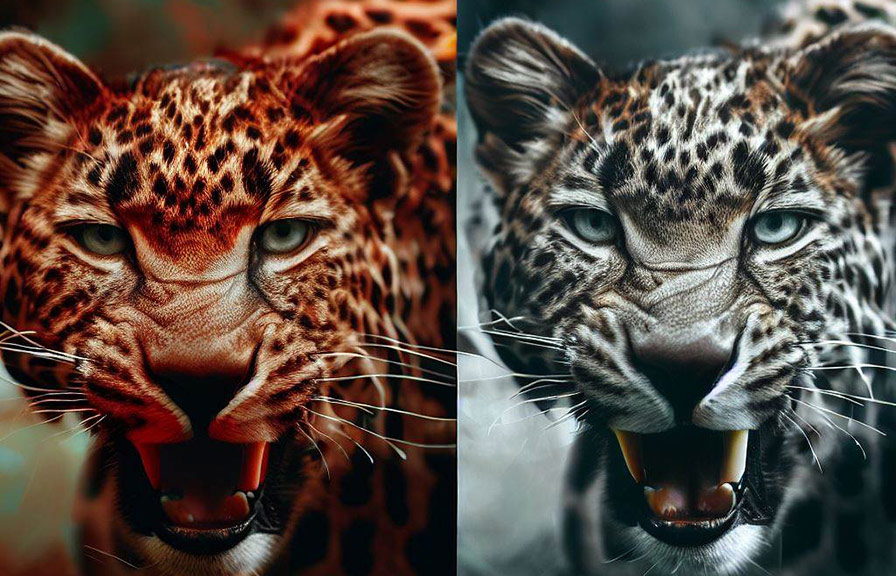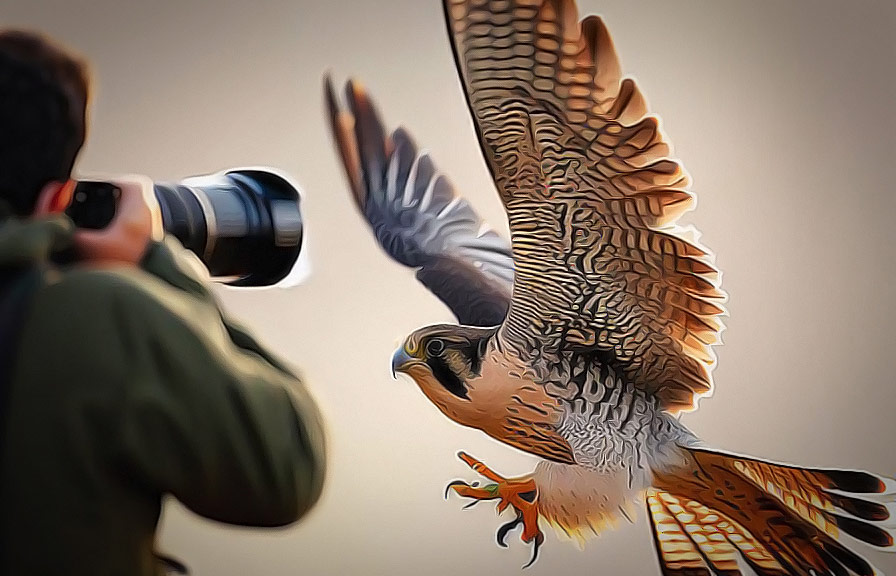Did you know that the world's fastest animal, the peregrine falcon, can reach speeds of up to 240 mph (386 kph) when it goes into a hunting dive? that's faster than most sports cars! capturing such a magnificent creature in action is the ultimate dream of many wildlife photographers.
In this post, we'll explore the secrets behind taking a great wildlife photo, and how you can attract, photograph, and edit your shots like a pro.

Attracting wildlife for your perfect shot
Attracting wildlife is the first step to capturing stunning photographs. here are some tips to help you draw in your subjects.
1. do your research
Understanding the habits and preferences of the animals you want to photograph is key. learn about their feeding times, breeding seasons, and favored habitats. this knowledge will help you anticipate their behavior and increase your chances of encountering them in the wild.
2. blend into the environment
Camouflaging yourself is crucial when approaching wildlife. wear clothing that matches the colors of your surroundings and minimize noise. if possible, use a hide or a blind to conceal yourself further.
3. use food and water as bait
Setting up a feeding station or a birdbath near your shooting location can be an effective way to attract wildlife. however, it's essential to follow local laws and guidelines to avoid disturbing or endangering the animals.
Capturing breathtaking wildlife photos
Once you've attracted your subjects, it's time to take some amazing wildlife shots. here are some strategies to help you capture the best possible images.
1. use the right equipment
A high-quality camera with a fast autofocus system and a telephoto lens is crucial for capturing sharp, detailed images of wildlife. a sturdy tripod can also be helpful for keeping your camera steady during long shooting sessions.
2. master your camera settings
Understanding how to adjust your camera settings is essential for wildlife photography. use a fast shutter speed to freeze motion, and a low iso to minimize noise in your images. experiment with aperture settings to achieve the desired depth of field.
3. be patient and persistent
Wildlife photography requires a lot of patience. be prepared to spend hours, or even days, waiting for the perfect shot. remain focused and alert, as opportunities can arise quickly and unexpectedly.
4. practice ethical photography
Respect the wildlife you're photographing, and always prioritize their well-being over getting the shot. keep a safe distance, avoid disturbing their habitat, and never use flash photography, as it can disorient and stress the animals.
Editing your wildlife photos for a professional finish
After capturing your images, editing is the final step to make them truly stand out. here are some tips to help you enhance your wildlife photos.
1. use a quality editing software
Powerful editing software like adobe lightroom or photoshop can greatly improve your images. these tools offer features like exposure adjustments, color correction, and noise reduction, which can make your photos look more professional.
2. crop for impact
Cropping your photos can help you remove distractions and improve the composition of your shots. focus on the subject, and use the rule of thirds to create balance and visual interest in your images.
3. enhance colors and contrast
Boosting the colors and contrast in your photos can make them more visually appealing. adjust the saturation, vibrance, and contrast sliders in your editing software to make your images pop.
4. sharpen your images
Applying a subtle sharpening effect can add definition and clarity to your photos. use the sharpening tool in your editing software to enhance the details of your subject without introducing noise or artifacts.
Here's a fun fact you might not have known: the world's smallest bird, the bee hummingbird, weighs less than a penny and can flap its wings up to 80 times per second! imagine capturing a shot of this tiny marvel in action.
With the tips and techniques shared in this blog post, you'll be well on your way to taking breathtaking wildlife photos that you can be proud of. keep practicing, and always remember to respect the animals and their habitats as you hone your skills.
Happy shooting!
